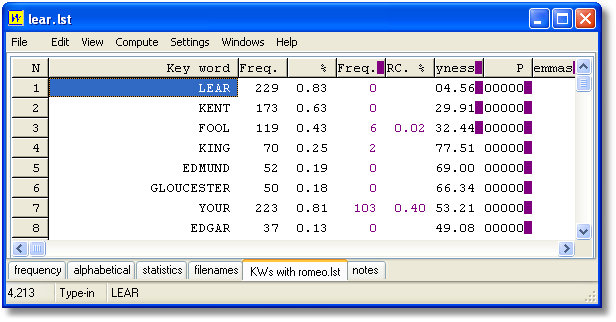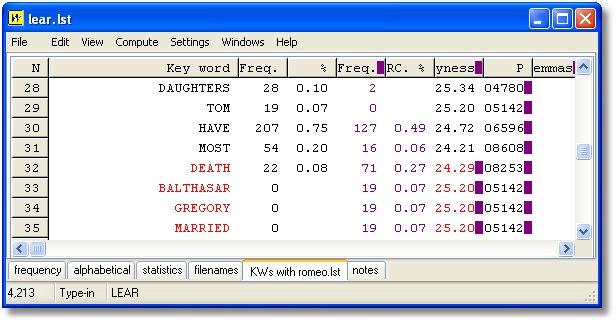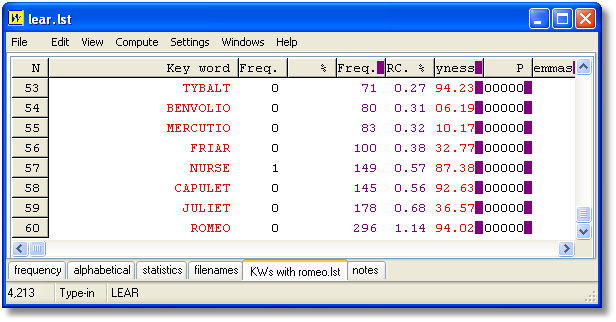Here is a comparison window, where we have compared Shakespeare's King Lear with Romeo and Juliet.
The display shows
frequency in the text you started with, here King Lear, (with % if > 0.01%) -- then, to the right
frequency in the other text, here Romeo & Juliet, (with % if > 0.01%) -- then, to the right
chi-square or log likelihood, and p value.
The criterion for what counts as "outstanding" is based on the minimum probability value entered before the lists were compared. The smaller this probability value the fewer words in the display.
The words appear sorted according to how outstanding their frequencies of occurrence are. Those near the top are outstandingly frequent in your main wordlist. At the end of the listing you'll find those which are outstandingly infrequent in the first text chosen: in other words, key in the second text.
This comparison is similar to the analysis of "key words" in the KeyWords program. The KeyWords analysis is slightly quicker and allows for batch processing.
The word Lear is the most key of all, it scores 304 on the keyness column. (It looks like 04.56 because the column hasn't been pulled any wider.)

The words above, in black, are key to Lear. Below, we see the middle of the listing --- the words in red are those which are key to Romeo. The word most is the last key word of Lear, and death the least key in Romeo; both have a keyness value of around 25 (positive or negative).

Here at the bottom we see the words which are most key to the play Romeo and Juliet.

The word which is most outstanding (key) here is Romeo, with a keyness score of 394 (the column needs to be puller wider).